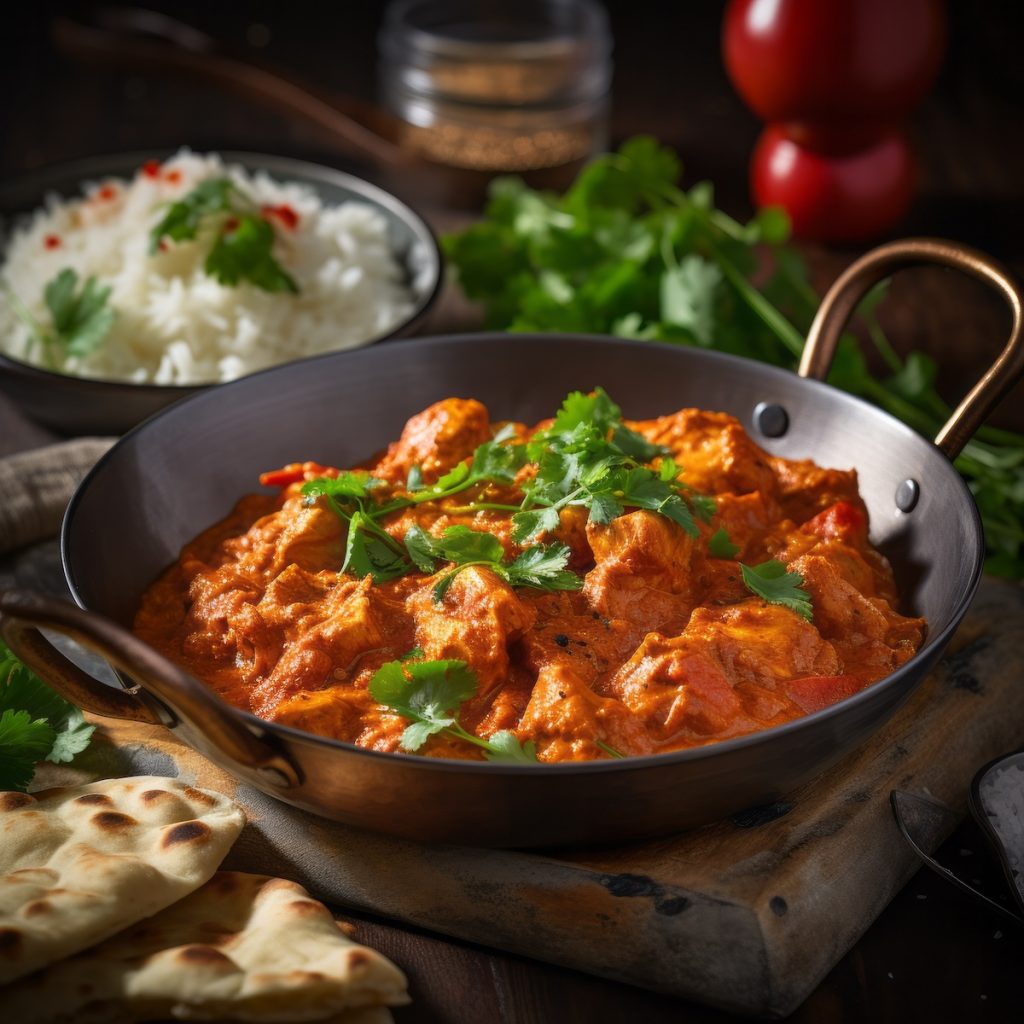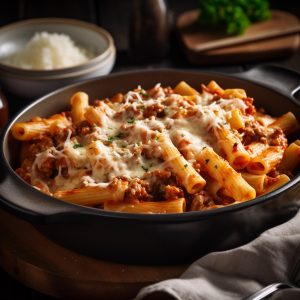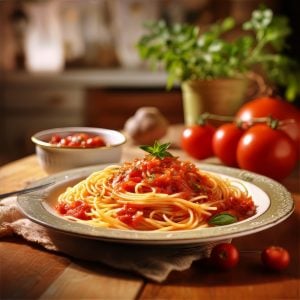What Is Curry the Dish?
People often confuse “curry the dish” and “curry the spice.” In this post, I would like to look at curry, the dish, what it is, history, hotness levels, and much more.
Curry is a beloved dish with roots in the Indian subcontinent and has since become popular worldwide. It is a flavorful and fragrant dish that can be made in many different ways, depending on the region and ingredients used. From its humble beginnings as a peasant food, curry has become a culinary icon, beloved for its rich flavors and versatility.
The history of curry dates back thousands of years, with the earliest known reference to the dish found in ancient Indian texts dating back to 2500 BCE. Over time, the dish evolved and spread throughout the Indian subcontinent, each region developing its unique variation.
In the south of India, for example, curries are often vegetarian and made with coconut milk, while in the north, they are more likely to be meat-based and spicy.
The word “curry” is believed to come from the Tamil word kari, which means “sauce.” The dish was introduced to the Western world by British colonizers stationed in India during the colonial era. They fell in love with the dish and brought it back to England, where it became a popular staple of British cuisine.
Today, curry is enjoyed worldwide, with variations reflecting local culture and ingredients. In Japan, for example, curry is often served with a side of pickles and rice, while in Thailand, it may be made with fish sauce and lemongrass. In the United States, curry is often made with a blend of spices, including turmeric, cumin, and coriander.
One of the great things about curry is its versatility. It can be made with various ingredients, including meat, fish, vegetables, and legumes. The most popular curry ingredients include chicken, lamb, beef, potatoes, peas, carrots, eggplant, and lentils.
In addition, curries can be made with various spice blends, depending on the desired flavor profile, with popular spices including cumin, coriander, turmeric, ginger, and chili powder.
One of the most popular types of curry is the Indian dish chicken tikka masala. This dish is made with marinated chicken that is grilled or baked, then simmered in a creamy tomato sauce flavored with a blend of spices. The dish is often served with rice or naan bread, perfect for sopping up the delicious sauce.
Another popular Indian curry is the vegetarian dish, chana masala, made with chickpeas, tomatoes, and a blend of spices.
Thai curries are also well-loved, with the most popular being green, red, and yellow curry. These curries are made with a base of coconut milk and a blend of spices, each color representing a different level of spiciness.
For example, green curry is the mildest, followed by yellow, then red, which is the spiciest. Thai curries are often made with seafood, chicken, or beef and are served with rice or noodles.
Japanese curries are another popular variation, with the dish known as katsu curry being a particular favorite. Katsu curry is made with breaded and fried chicken or pork cutlets with thick and savory curry sauce. The dish is often served with rice and pickles and is a comforting and filling meal popular with adults and children.
In addition to being delicious, curry has many health benefits. The spices used in curries, such as turmeric and ginger, are rich in antioxidants and have anti-inflammatory properties. Curry dishes that include vegetables and legumes are also a great source of fiber, vitamins, and minerals, making them a healthy and satisfying meal option.
The ingredients used in curry can vary depending on the specific type of curry and the region in which it is prepared. However, some common ingredients are frequently used in many different curries. Here are some of the most commonly used ingredients in curry:
- Spices are crucial to curry, giving the dish a unique flavor and aroma. Some of the most commonly used spices in curry include cumin, coriander, turmeric, ginger, cardamom, cinnamon, and chili powder.
- Curries can be made with various proteins, including chicken, lamb, beef, fish, and shrimp. Vegetarian curries are also popular and can be made with various vegetables, such as potatoes, cauliflower, peas, and eggplant.
- Onion and garlic are often used as a base for the curry sauce. They add depth of flavor and can be sautéed until soft and caramelized.
- Tomatoes are often used in curries to add acidity and sweetness. They can be used fresh or canned, depending on the recipe.
- Coconut milk is commonly used in curries from Southeast Asia, as it adds a rich, creamy texture and flavor to the dish.
- Yogurt is often used in curries from India and Pakistan, where it is used to add tanginess and a creamy texture to the sauce.
- Lemon or lime juice is often added to curries to add acidity and brightness to the dish.
- Oil: Oil is used to sauté the onion and garlic and to cook the meat or vegetables. Common oils used in curry include vegetable oil, canola oil, and coconut oil.
Curry is a dish known for its complex and bold flavor, which is achieved through various spices. Here are some of the most popular spices used in curry and a brief description of their flavor profile:
- Cumin is a warm, earthy spice with a slightly bitter flavor. It is often used in curry blends to add depth, flavor, and complexity.
- Coriander has a bright, citrusy, sweet, and slightly savory flavor. It is commonly used in curry blends to balance the spiciness and add a fresh, herbaceous note.
- Turmeric is a bright yellow spice with a warm, slightly bitter flavor. It is commonly used in curry blends to add color and depth of flavor and provide anti-inflammatory and antioxidant benefits.
- Ginger has a spicy, slightly sweet flavor with a hint of citrus. It is often used in curry blends to add a zesty kick and balance out the dish’s richness.
- Cardamom has a sweet, floral flavor with notes of citrus and spice. It is often used in curry blends to add complexity and depth of flavor.
- Cinnamon: Cinnamon has a warm, sweet flavor that is slightly spicy. It is often used in curry blends to add warmth and depth of flavor.
- Chili Powder: Chili powder blends ground chili peppers and other spices. It is often used in curry blends to add heat and spiciness.
The combination of spices used in curry can vary depending on the region and the specific recipe. However, these popular spices often achieve an excellent curry’s bold and complex flavor.
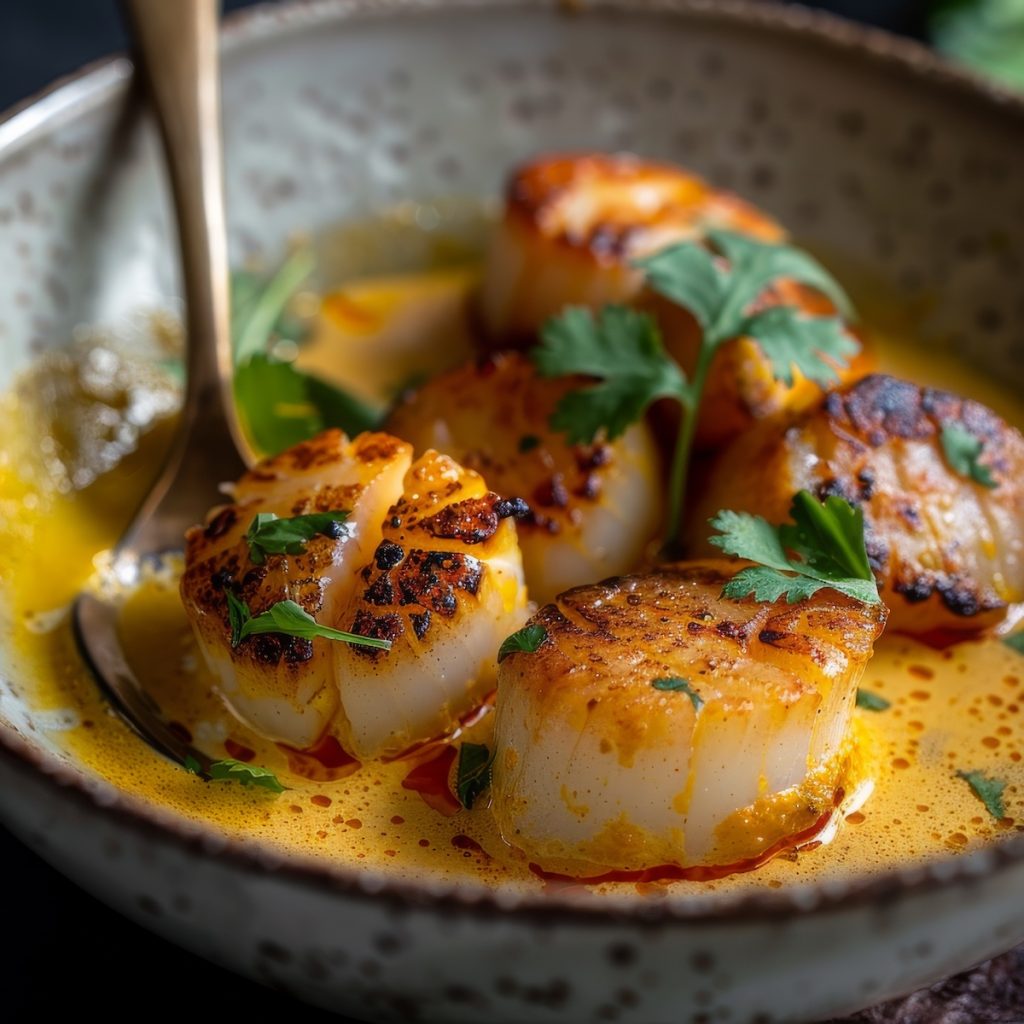
Garam masala is a blend of ground spices commonly used in Indian and South Asian cuisine. The name “garam masala” translates to “hot spice blend” in Hindi, although the heat referred to is more in terms of the warming effect the spices have on the body rather than being spicy in terms of heat level.
Garam masala is typically made by grinding whole spices such as cinnamon, cardamom, cloves, cumin, coriander, and black pepper. The specific combination of spices and the ratio used can vary depending on the region and the cook’s preferences.
It is often used as a finishing spice or a final seasoning in dishes such as curries, soups, stews, and rice dishes. It is added towards the end of the cooking process, allowing the spices to release their flavor and aroma without being overcooked or losing their potency.
In the context of curry, garam masala is often added to the dish towards the end of the cooking process to enhance the flavor and aroma of the other spices in the curry blend. It can add depth and complexity to the dish, rounding out the flavors and providing a warming, aromatic finish.
Garam masala is a critical component of many curry recipes, although the specific blend and amount used can vary depending on the recipe and the cook’s preferences.
- Indian cuisine is known for its wide variety of curries, each with its unique blend of spices and ingredients. Some of the most popular Indian curries include butter chicken, tikka masala, vindaloo, korma, and rogan josh.
- Thai curries are known for their bold flavors and use of fresh herbs and spices. Some of the most popular Thai curries include green, red, yellow, and massaman curry.
- Japanese curries are thicker and sweeter than other curries, often featuring ingredients such as potatoes and carrots. Some popular Japanese curries include katsu curry and beef curry.
- Malaysian and Indonesian curries often feature coconut milk and a blend of spices, such as turmeric, lemongrass, and ginger. Some popular Malaysian and Indonesian curries include rendang and laksa.
- Caribbean curries are a fusion of Indian and African cuisines, featuring bold flavors and spices such as allspice and scotch bonnet peppers. Some popular Caribbean curries include goat curry and chicken curry.
- Curry is a beloved dish in Britain and has even been called the country’s national dish. British curries often combine Indian and British flavors, featuring a blend of spices and ingredients such as tomato sauce and cream. Some popular British curries include chicken tikka masala and vindaloo.
Different hotness levels can be used when describing the spiciness in curry. Here are some of the most common hotness levels used to describe curry:
- Mild curries are not very spicy and are usually suitable for those not used to spicy food. They may still have some heat, but it should not be overpowering.
- Medium curries have a bit more heat than mild curries but are still not too spicy. They may have a slight kick to them, but the heat should be manageable.
- Hot curries have significant heat and can be pretty spicy. Therefore, they may cause sweating and discomfort for those not used to spicy food.
- Very hot curries are extremely spicy and are not for the faint of heart. They can be intense and cause a burning sensation in the mouth, sweating, and discomfort.
- Super hot curries are the hottest and are usually only for those used to extremely spicy food. They can be highly intense and may even cause physical pain for some people.
It’s important to note that the hotness level of curry can vary widely depending on the specific recipe and the type of chili peppers used. Additionally, personal tolerance for spiciness can vary widely, so what is considered mild for one person may be too hot for another. Therefore, when ordering or preparing curry, it’s always a good idea to ask about the level of spiciness so you can choose a dish that suits your preferences.
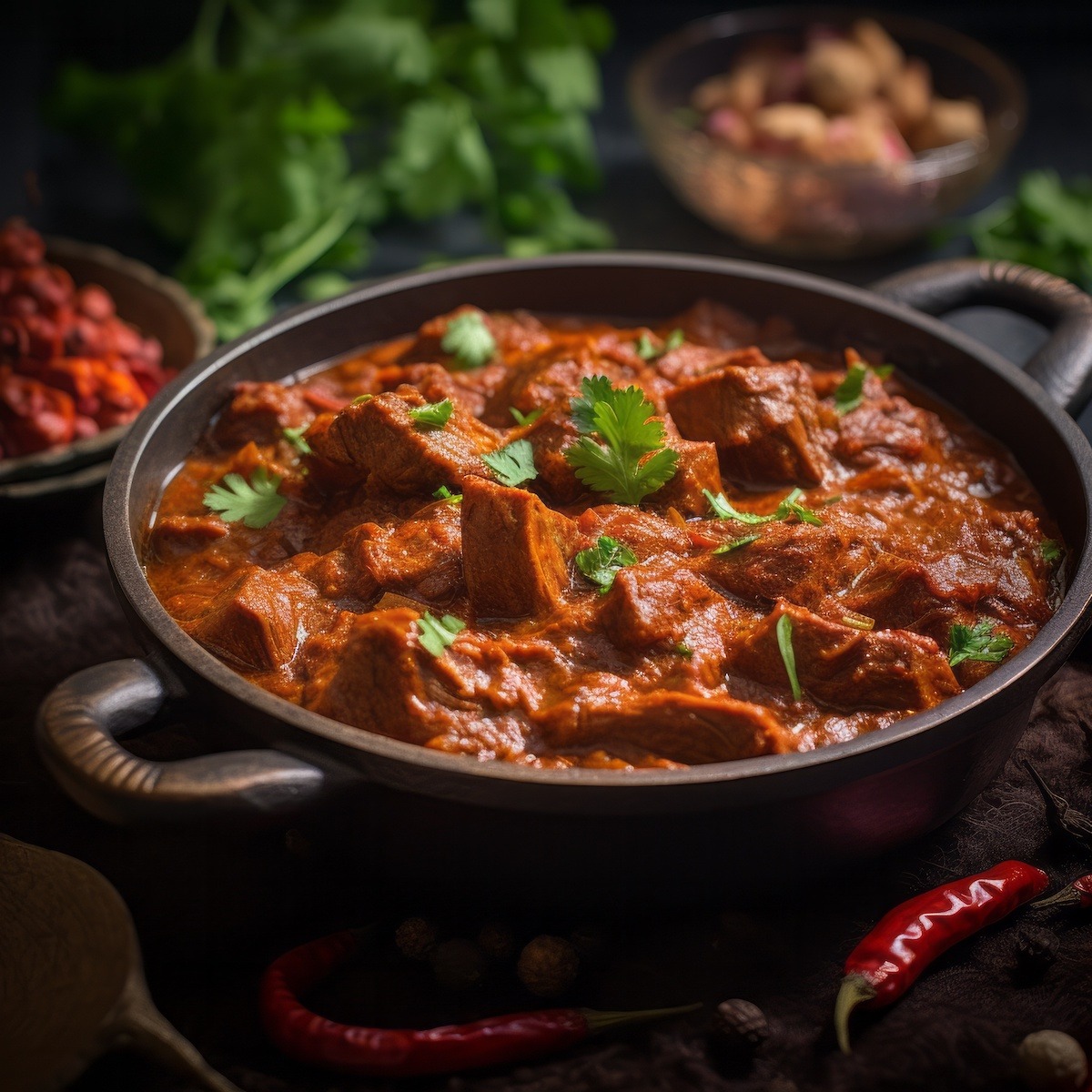
Vindaloo is a popular Indian dish that originated in the Goa region. It typically consists of meat, such as pork or chicken, marinated in a spicy sauce made with vinegar, garlic, ginger, and various spices, including cumin, coriander, and chili peppers.
The name “vindaloo” is derived from a Portuguese dish called “carne de vinha d’alhos,” which translates to “meat in garlic wine marinade.”
This dish was brought to India by Portuguese traders and colonizers in the 15th century, and over time, it was adapted to include local ingredients and flavors. The key to a good vindaloo is the balance of flavors between the vinegar’s sourness and the chili peppers’ spiciness.
The meat is marinated in the sauce for several hours, allowing the flavors to penetrate it and infuse it with a tangy, spicy flavor. The dish is typically served with rice or bread, such as naan.
Vindaloo is known for being a very spicy dish, although the level of spiciness can vary depending on the recipe and the cook’s preference. In some restaurants, vindaloo is offered as a challenge to customers, with those who can finish the spiciest version of the dish receiving recognition or prizes. However, it’s essential to be cautious when eating spicy food, as it can cause discomfort or even health issues for some people.
The origin of chicken tikka masala is a matter of debate, and there is no definitive answer as to who invented it. However, there are several stories and theories about the dish’s history.
One popular story is that chicken tikka masala was invented in the United Kingdom in the 1960s or 1970s. According to this theory, the dish was created by chefs in Indian restaurants in the UK looking to create a new dish that would appeal to British tastes. So they combined traditional Indian spices and flavors with a creamy tomato-based sauce to create the dish we know today as chicken tikka masala.
Another theory suggests that the dish originated in India, possibly in the Punjab region, and was later adapted by chefs in the UK. According to this theory, the dish was created as a way to use up leftover chicken tikka, which is a popular Indian appetizer made with marinated chicken that is grilled or roasted.
Despite the uncertainty surrounding its origins, chicken tikka masala has become one of the most popular dishes in Indian and British cuisine. It is typically made with boneless chicken that has been marinated in yogurt and spices, then grilled or roasted before being simmered in a creamy tomato-based sauce. The dish is often served with rice or bread, such as naan or roti.
“Let’s go have a curry” is a common expression in British English, particularly about eating a curry dish at a restaurant. The phrase has become a popular part of British culture and is often used casually to suggest getting together with friends or family for a meal.
There are several reasons why this phrase has become so popular in British culture. One reason is that the UK has a large South Asian population, mainly from India, Pakistan, and Bangladesh. As a result, Indian cuisine has become very popular and widely available in the country.
In addition, the popularity of Indian food has led to the rise of numerous Indian restaurants and takeaways across the country, making it easy and convenient for people to go out and enjoy a curry dish.
Additionally, the phrase “let’s go have a curry” has become a part of British slang and is often used to suggest going out for a casual, fun meal with friends or family. It has become a shorthand for the idea of getting together and enjoying good food and good company and is often used as a way to socialize and bond with others.
The differences between curry in Northern India, Central India, and Southern India are primarily influenced by geography, climate, and cultural traditions. Here are some of the key differences:
- Northern Indian cuisine is known for its rich, creamy curries that often feature dairy products, such as cream, ghee, and paneer cheese. Spices commonly used in Northern Indian curries include cumin, coriander, turmeric, and garam masala. Some popular Northern Indian curry dishes include butter chicken, chicken korma, and palak paneer.
- Central Indian cuisine is known for its spicy and aromatic curries that often feature chili peppers, mustard seeds, and fenugreek. One of the most popular Central Indian curry dishes is vindaloo, a spicy curry made with meat, vinegar, and a blend of spices.
- Southern Indian cuisine is known for its tangy and spicy curries that often feature coconut milk, tamarind, and curry leaves. Spices commonly used in Southern Indian curries include mustard seeds, cumin, coriander, and fenugreek. Some popular Southern Indian curry dishes include sambar, rasam, and fish curry.
In addition to these differences in ingredients and flavor profiles, there are differences in how curry dishes are prepared and served in different regions of India. For example, in Northern India, curries are often cooked in a thick gravy and served with flatbreads, such as naan or roti. In contrast, in Southern India, curries are often served with rice or dosa, a savory pancake made from a fermented batter.
The differences between curry in Northern India, Central India, and Southern India are primarily influenced by geography, climate, and cultural traditions. Here are some of the key differences:
- Northern Indian cuisine is known for its rich, creamy curries that often feature dairy products, such as cream, ghee, and paneer cheese. Spices commonly used in Northern Indian curries include cumin, coriander, turmeric, and garam masala. Some popular Northern Indian curry dishes include butter chicken, chicken korma, and palak paneer.
- Central Indian cuisine is known for its spicy and aromatic curries that often feature chili peppers, mustard seeds, and fenugreek. One of the most popular Central Indian curry dishes is vindaloo, a spicy curry made with meat, vinegar, and a blend of spices.
- Southern Indian cuisine is known for its tangy and spicy curries that often feature coconut milk, tamarind, and curry leaves. Spices commonly used in Southern Indian curries include mustard seeds, cumin, coriander, and fenugreek. Some popular Southern Indian curry dishes include sambar, rasam, and fish curry.
In addition to these differences in ingredients and flavor profiles, there are differences in how curry dishes are prepared and served in different regions of India. For example, in Northern India, curries are often cooked in a thick gravy and served with flatbreads, such as naan or roti. In contrast, in Southern India, curries are often served with rice or dosa, a savory pancake made from a fermented batter.

